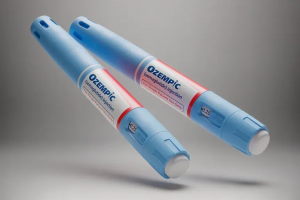 Although GI issues are commonly reported side effects of semaglutide (GLP-1) medications, there things you can do to help patients reduce and manage them.
Although GI issues are commonly reported side effects of semaglutide (GLP-1) medications, there things you can do to help patients reduce and manage them.
Although semaglutide medications such as Ozempic and Wegovy are helping patients with obesity and type 2 diabetes to lose weight, there are some side effects of semaglutide medications that can have an impact on a patient’s nutritional needs. For example, side effects include gastrointestinal issues such as nausea, diarrhea, vomiting, boating, and stomach paralysis. Because proper nutrition is crucial during active weight loss, the quality and type of calories consumed should be a key focus.
Side Effects of Semaglutide
Semaglutide is a GLP-1RA and can be taken subcutaneously or orally, which is unlike other drugs in this class. Side effects are of course common with many medications and semaglutide medications are no different. Subcutaneous and oral semaglutide were compared in one part of phase 2 trials with patients being randomized into 5, 10, 20, or 40 mg once daily oral semaglutide doses and 1mg once weekly subcutaneous semaglutide doses. GI events were similarly observed in both the 20mg oral and 1mg subcutaneous doses, with GI side effects observed in 56 percent and 54 percent, receptively. Nausea (34 percent and 32 percent), vomiting (16 percent and 9 percent), and diarrhea (20 percent and 14 percent) were observed in oral and subcutaneous doses. Patients in the 20mg oral semaglutide treatment group in this part of the phase 2 trial had a higher dropout rate (27 percent) compared to the 1mg subcutaneous treatment group (14 percent). Adverse GI events when doses for both the oral and subcutaneous doses were increased, though when the dose was increased to 40 mg in two weeks 77 percent of patients experienced adverse GI events compared to only 54 percent of patients in the eight-week dose escalation group.
Helping Patients Mitigate the Side Effects of Semaglutide
Semaglutide medications such as Wegovy and Ozempic suppress one’s appetite, contributing to as much as a 45 percent decrease in caloric intake. Because the GI events noted above can put patients at risk for nutritional deficits, it is important to consider the role of nutrition while patients are on an anti-obesity medication, so working your patients to develop a healthy eating plan will play a crucial role in their weight loss success and overall well-being.
Educating patients on the importance of consuming nutrient-dense foods like lean proteins for lean muscle mass preservation and non-starchy vegetables and fruits to help meet recommended dietary allowances can help them make informed food choices. Nutritionally designed shakes/beverages help patients maintain a healthy caloric intake, stable blood sugar levels throughout the day, and a balanced and nutritious diet. Nutritionally designed shakes/beverages have the added benefit of reducing GI side effects and should be considered as part of patients eating healthy plan while on anti-obesity medications. To ensure nutritional needs are being met, pre-packaged, nutritionally designed shakes/beverages offer convenience and satisfy daily recommendations for vitamins and minerals.

